

- 1. Check state laws about plant travel
- 2. Prep your plants for the move
- 3. How to pack your plants in a car or truck
- 4. How to ship plants by mail
- 5. How to prepare in-ground garden plants
- 6. How to care for your plants during the move
- 7. Plant care after the move
- 8. The best (and worst) plants for moving house
If you have houseplants that you love, what happens when you move? You’ve invested a lot into caring for those little buddies, and starting over with new plants just wouldn’t be the same.
Fortunately, it’s possible to take your beloved plants, including outdoor plants, with you—even if you’re moving long distance.
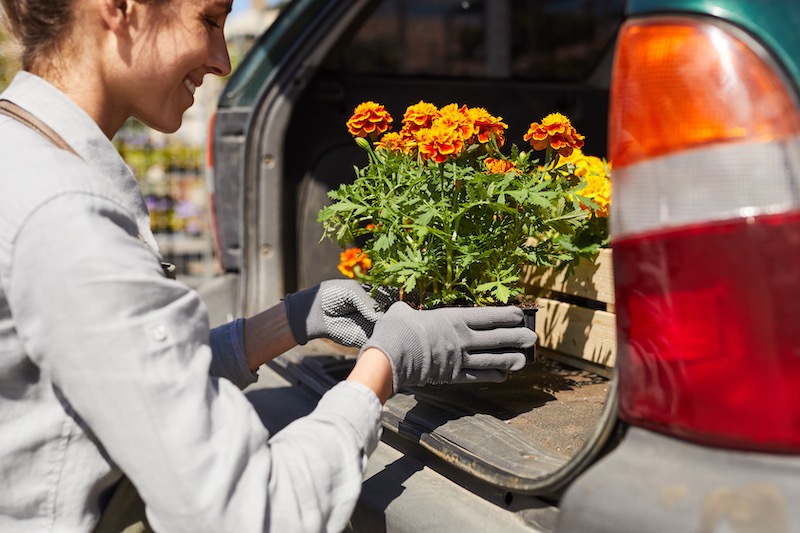
1. Check state laws about plant travel
Your first step is to check if you’re allowed to take your plants at all. Some states ban certain species of plants, in case pests or invasive species come with them. Here are just a few examples:
- You can’t bring citrus plants into California
- You can’t bring walnut, pecan, or hickory trees into Texas
- You can’t bring non-native aquatic plants into Florida
Sometimes the rules get a little gnarly and complicated.
Certain plants are only allowed into a state under certain conditions.
- California only allows you to bring houseplants if they will be kept indoors and potted in commercial potting soil, not soil from your backyard
- Washington State requires a certificate of inspection for your plants
- Many other states require specific types of plants, or plants coming from certain areas, to spend time in quarantine when they cross state lines, or to be potted in sterile soil.
Finally, there are some plants that the Department of Agriculture prohibits from transporting anywhere in the US. Take a look at this list to see the full details for the state you’re moving to, and remember to check the regulations for every state you’ll be passing through, too.
You might need to plan your route carefully to avoid running afoul of the proverbial plant police.
2. Prep your plants for the move
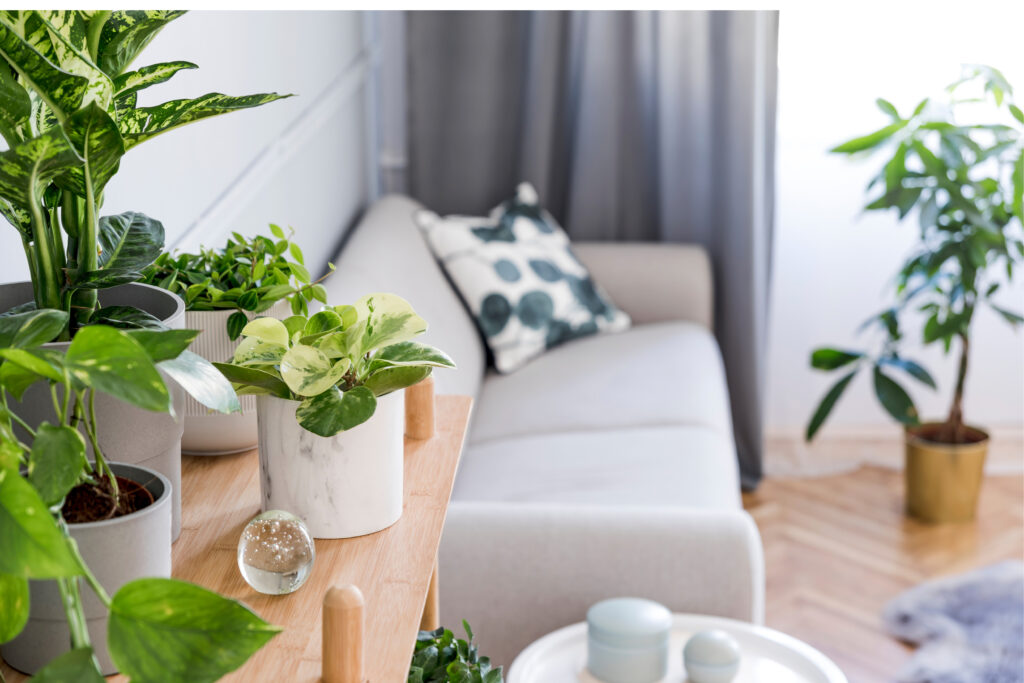
Most movers and shipping companies won’t transport plants, either because of the complexity of state laws, or to avoid the liability risks.
Don’t fret: There are dedicated plant-moving companies. Or you can keep your beloved plants close at hand by driving them in your own car or a rental truck.
Before your waste a ton of time and effort, check this plant hardiness zone map to see if your plants will adapt well to the conditions where you’re moving. You might need to reconsider where you keep them in your new home, or change how often you water them.
Moving is stressful for plants, and travel prep starts a good three weeks in advance. That’s when you’ll repot your plants for the move—not necessary for smaller plants, but a good idea for ones in large ceramic pots—so they’ll have plenty of time to adjust to their new habitat.
One week before moving day, prune your plants carefully. Remove all the dead leaves and twigs.
You also want to make sure they are insect-free, so put a flea collar around the pot to draw out any critters.
Two to three days before the move, water your indoor plants. You don’t want to do this right before you hop in the car, because then they’ll be heavy, soggy, and likely to leak all over the place. But you do want the soil to stay moist during the move.
Wait until the day of the move to actually stow your plants in your vehicle.
3. How to pack your plants in a car or truck
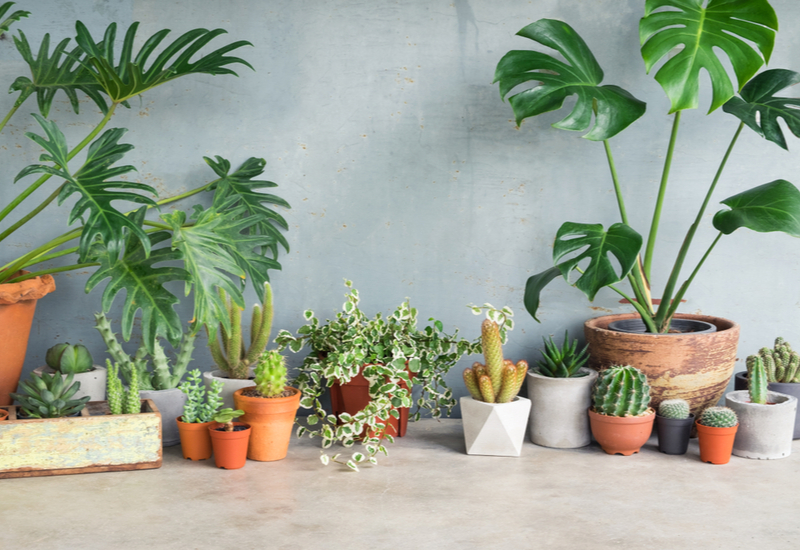
The best way to pack plants depends on their size.
Small plants can stay in their own pots. Just nestle them inside a cardboard box and place packing paper, bubble wrap, or cardboard between them to stop them from jostling. Consider repurposing boxes from wine bottles or fancy glasses, since the dividers give each plant its own space.
Leave the lids of the moving boxes open so your plants can get light and air. If you have to close the lids, at least poke some holes for increased airflow.
Large plants in heavy ceramic pots should be repotted into lighter plastic pots or eco-friendly cardboard planters. Place each pot inside its own trash bag or plastic bag. Tie it over the top of the pot, around the base of the plant, to stop the soil from spilling out and to catch drips. Meanwhile, pack the original, now-empty ceramic pots separately so they don’t break.
If you’re moving with a tree, it’ll probably need to go on its side in the moving truck. Put some sphagnum moss in the pot and cover it with plastic wrap.
4. How to ship plants by mail
If you can’t take your plants in your car or truck, the next best option is to send them by mail (though it can get costly). Use the fastest shipping option possible; make sure you arrive before they do; and pack them carefully.
To prep potted plants for travel by mail:
- Remove them from the pot
- Trim the roots
- Wrap the plant in wet paper towels
- Put the plant in a plastic bag
- Place plants in a packing box
If you’re worried about the plant getting too dry on the journey, mix a few teaspoons of polymer moisture crystals with water and add it to the roots before wrapping. You can also roll the plant loosely in newspaper, to help protect the stems and leaves.
Use a sturdy box that’s the right size for the plant, so it won’t bang around inside and get damaged. Stuff all the empty spaces with bubble wrap and crumpled packing paper.
Label your plant with obvious words like “fragile,” “live plant,” and “this end up!” so that postal service workers will be more likely to treat it with TLC.
Want to prevent your plant from spending too long sitting around in a depot? If you’re using USPS, mail plants at the beginning of the week, because the mail service generally doesn’t run on Sundays.
You should also check the weather. Mailing your plant during a heatwave or cold snap won’t be good for its health.
5. How to prepare in-ground garden plants
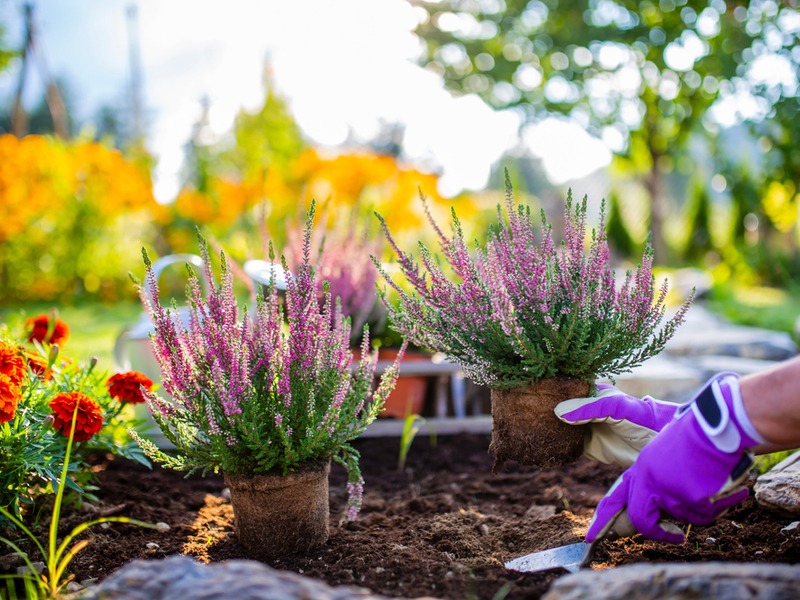
The best time of year to move in-ground plants is spring or fall, when temperatures are more moderate.
Here’s how to prep your in-ground plant:
- Soak it well the night before you move
- Dig a ring around the base of the plant, taking care not to cut the roots
- Leave the extra soil clinging to the root ball to protect the roots
If the plant is too big to dig up from the garden, take a cutting from it that’s 3–6 inches long.
Wrap your cutting in wet paper towels and secure it with a rubber band, or plant it in a small pot.
Cover it loosely with plastic and put it in the box with your other plants.
6. How to care for your plants during the move
Your plants should travel in the main car or the cab of the truck, not the trunk, so they can receive light and air.
Fragile plants should go on the front seat next to you, so you can keep an eye on them and control their temperature. Less fragile plants can be placed on the back seat, secured with a seatbelt. Adorable!
Don’t ship plants in the open bed of a pickup, because they can be damaged by wind.
Load your plants last, after other items, to limit the time they’re cooped up in your car. Check them often during your trip. Spray them with water if needed, and adjust them to make sure they are getting enough sunlight.
If you need to stop and rest for the night, take your plants into your hotel room with you, to prevent them from drastic changes in temperature. There’s no need to snuggle or spoon your plants, of course, and attempting to do so will result in quite a mess.
7. Plant care after the move
As soon as you arrive, take your plants out of the car, place them in the appropriate amount of sunlight, and water them. Replant them into their new garden or back into their original pots as soon as possible.
Don’t be alarmed if your plants wilt a little. Just remove dead foliage, water as normal, make sure they have enough light, and be patient. With any luck, they’ll bounce back just fine.
8. The best (and worst) plants for moving house
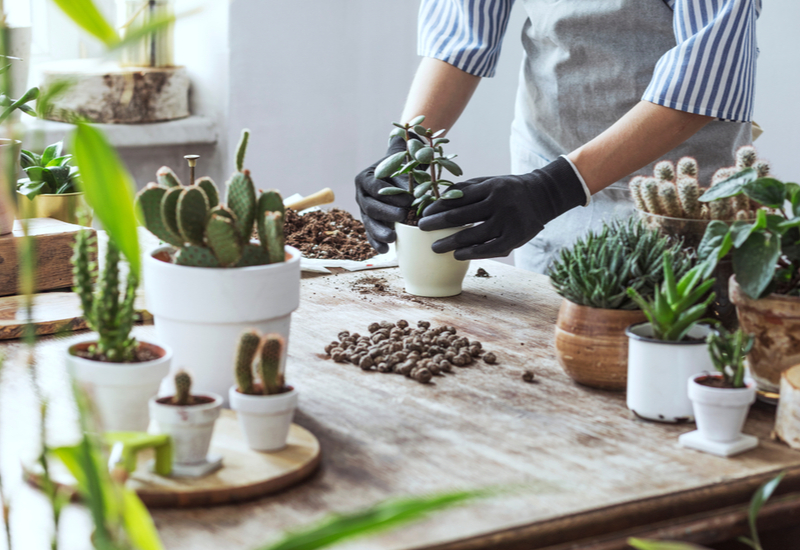
Some plants are much more move-friendly than others. Here are some plants that are most likely to survive a long-distance relocation:
- Succulents evolved to survive in challenging conditions, so they are well set up to cope with travel
- Chinese evergreens can deal with anything except for too much water, so moving homes should be a cinch
- The snake plant has been described as “a plant you have to try to kill,” so a long-distance house move is nothing
- Devil’s Ivy can pretty much come back from the dead—creepy—so even if it suffers in transit, it’ll probably recover
On the other hand, there are some plants that aren’t likely to make it. Save yourself the anguish and time: If you have one of these plants, give it away to a friend and buy a new one when you are settled in your new home.
- Boston ferns are high maintenance, demanding warm temperatures and high humidity
- Gardenias don’t like to be moved—they also suffer when exposed to drafts, or get too little sunlight, both of which are likely to be the case during a move
- Orchids are hard to grow even under the best conditions, and the lack of water and uneven temperatures during travel are not ideal
- Banana plants need tropical conditions, plenty of water, and temperatures that are just right, none of which is likely while you’re traveling
Plants can make a house a home

After spending all this time making sure those plants are safe and protected, you’ll want to make sure your house is, too.
Lemonade Homeowners insurance covers your property (including trees, shrubs, and other plants) and your belongings against the unpredictable and unfortunate. Click below to get your quote and see if Lemonade is a good fit for you.
A few quick words, because we <3 our lawyers: This post is general in nature, and any statement in it doesn’t alter the terms, conditions, exclusions, or limitations of policies issued by Lemonade, which differ according to your state of residence. You’re encouraged to discuss your specific circumstances with your own professional advisors. The purpose of this post is merely to provide you with info and insights you can use to make such discussions more productive! Naturally, all comments by, or references to, third parties represent their own views, and Lemonade assumes no responsibility for them. Coverage and discounts may not be available in all states.



